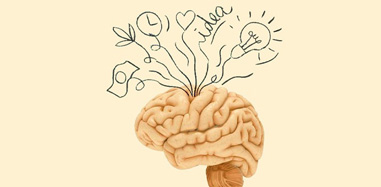Share this article
A brand’s success is determined by more than just its recognisable logo. To achieve a stronger and more valuable brand presence, it is important to understand the fundamental concept of brand value and its nuances in comparison to brand equity.
In this post titled “Brand Metrics: Understanding and Measuring Value”, we explore the key aspects of brand metrics, showcase real-world examples, and provide you with essential insights on how to effectively measure your brand’s worth. By unraveling the mysteries of brand metrics, you can discover the keys to building a stronger and more valuable brand presence that can help you stand out in the competitive market.
Table of Contents
ToggleWhat is Brand Value?
Brand value is the monetary worth of your brand. If you were to sell your brand, the brand value would be the money you get from it. A brand’s value will be evaluated during mergers and acquisitions (M&A). A positive brand reputation will increase the monetary value of your brand.
Companies with a well-known brand name are more likely to have higher brand value than other less-known brands.
Brand Value vs Brand Equity
The terms brand value and brand equity are often used interchangeably, but they represent distinct concepts in marketing.
While brand value refers to the monetary worth of a brand, brand equity refers to the consumers’ perception of the brand. In other words, brand equity refers to a set of intangible assets and liabilities associated with a brand.
If customers choose a brand over others in the market and remain loyal to it, the brand equity of that brand is high. If the customer’s perception of a brand is positive, it will result in positive brand equity.
Creating and maintaining strong brand equity is critical to a company’s success.
Let’s now take a look at some examples of brand value.
Brand Value Examples

Amazon ranks #1 globally with its brand valued at $299 billion. As a market leader in online retail, it has strong brand loyalty in its B2C segment which generates its largest share of revenue.
Apple is in close second position with a $298 billion brand value.
Here are some examples of the brand values of top organisations.
Coca-cola:
Coca-Cola is one of the most powerful brands in the world.
Coca-Cola promises the same set of principles across the world: happiness, sharing and family. Their brand values serve as a compass for their actions and describe how the brand behaves in the world.
Following are their universally embedded core values:
Leadership: The courage to shape a better future.
Collaboration: Leverage collective genius.
Integrity: Be real.
Accountability: If it is to be, it’s up to me.
Passion: Committed in heart and mind.
Diversity: As inclusive as our brands.
Quality: What we do, we do well.
Adidas:
Sporting goods company Adidas’ marketing strategy emphasises quality, innovation, diversification, and advertisements to retain its position as one of the best brands in the competitive market. Their mission statement says, “We are committed to continuously strengthening our brands and products to improve our competitive position.” Its core brand values are:
- Performance
- Passion
- Integrity
- Diversity
Brand valuation process- How to measure brand value
Brand valuation is the process of estimating the total financial value of a brand. It is simply the sale or replacement value of a brand. Brand valuation as a concept emerged in the 1980s.
Since the inception of brand valuation, there has been an ongoing dispute regarding the process involved in it and the people responsible for it. One of the biggest concerns is the potential conflict of interest that arises when the same people who create a brand are also responsible for evaluating its value.
Below is a quick and short explanation of the major steps involved in the brand valuation process.
Assign a valuator and decide the level of valuation – A valuator prepares different levels of reports ranging from basic to highly detailed.
2) Get business information – you can get this market information from numerous sources including the following:
- Financial statements for the past 3 to 5 years – to evaluate financial performance and situation
- The prior year’s tax return
- Business location, square footage and ownership or rental status of facilities
- Number of employees
- Patents, bylaws, and shareholder agreements
- A sales breakdown by the customer for the past 3 to 5 years – in order to determine customer concentration
- Information on supplier concentration
- Information on competitors and the brand’s competitive strength in the market
- Independent research on market conditions, business trends and risk factors
3) Apply the appropriate Valuation Method
There are three main valuation methods for companies and the valuator chooses the method or a combination of methods that best suits the type of business and according to the information available to them.
Cost Based Method
Cost-based valuation is similar to saying that a home is worth the amount of money it took to build and furnish it. This method values a brand using the costs that have been incurred to build the brand since its beginning.
Items you would include when evaluating costs are historical advertising, promotion expenditures, cost of campaign creation, licensing and registration costs, and cost of any trademarks.
Using cost-based valuation requires you to evaluate the cost of the brand and restate the actual expenditures in current cost terms. You can use this method of brand valuation if you have just launched or if you’re going through the process of re-developing your brand.
Market Based Method
Market-based valuation is similar to researching the prices of houses in your neighbourhood before you set a price for selling your home. It uses one or more points of comparison between your business and similar brands that have been sold.
The points of comparison can be the specific sale of a brand, comparable company transactions, or stock market quotations. Market-based brand valuation is the amount for which a brand can be sold and is equal to a market transaction price, bid, or offer for identical or reasonably similar brands.
Income Based Method
The income approach to brand valuation is similar to looking at a house’s potential earnings as a rental property and using that to estimate its current value. This method is often referred to as the “in-use” approach.
To calculate the brand value, the income approach uses future net earnings that can be attributed directly to the brand to determine its current value.
The brand value using this method is equal to the value of income, cash flow, or cost savings due to the reputation or recognition of the brand. This method values a brand using the costs that have been incurred to build the brand since its beginning.
So why is it important to know your brand’s value?
There are many common purposes for determining the brand value that and below are three major usage categories:
- Financial applications (e.g. mergers and acquisitions, balance sheet valuation, investor relations, raising funds)
- Brand management applications (e.g. brand portfolio management, resource allocation)
- Strategic / Business case applications (e.g. brand architecture, brand repositioning, investor’s presentation)
Brand Value requires an Investment Philosophy. An international MBA will provide you with a deeper understanding of brand management tactics and will introduce you to strategies for brand building and positioning. This will guide you in effectively utilizing your marketing and operational resources to strengthen your brand equity value.
















